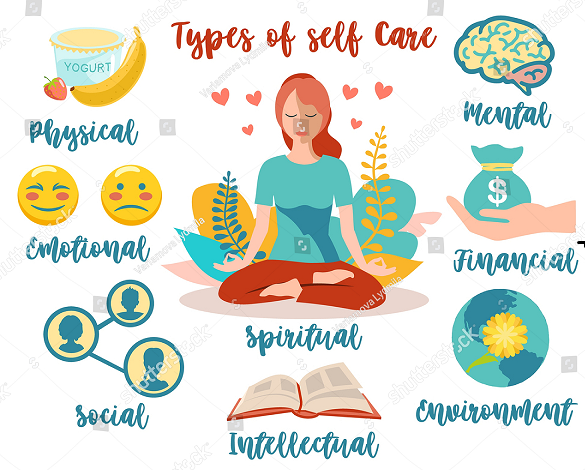Mindfulness Meditation; 12 ways to practice

Introduction ;
Mindfulness involves a form of meditation where the emphasis is on cultivating a heightened awareness of one’s immediate sensations and emotions. The practice encourages individuals to observe the present moment without attaching interpretations or judgments.
Mindfulness ;
Engaging in mindfulness entails the use of techniques such as controlled breathing, guided imagery, and various other practices aimed at promoting relaxation of both the body and mind. These approaches are intended to alleviate stress. In today’s fast-paced world, maintaining good health goes beyond just physical fitness. The interplay between our mental and physical well-being has garnered increasing attention.
One powerful tool that’s gained popularity is mindfulness – a practice that fosters a deep connection between mind and body. It can be practiced through meditation, yoga, or simply by being more aware of your thoughts and feelings. It has gained significant attention in recent years for its potential to improve both mental and physical health.
Key principles include:
Present Moment Awareness :
Mindfulness encourages you to be fully present in the here and now, rather than dwelling on the past or worrying about the future.
Non-Judgment:
It involves observing your thoughts, emotions, and sensations without passing judgment on them as good or bad. It’s about accepting whatever arises with equanimity.
Observation:
You observe your thoughts and feelings as they come and go, recognizing that they are transient and not a fixed part of your identity.
Mind-Body Connection:
Mindfulness often involves paying attention to physical sensations in the body, as they can provide valuable information about your emotional state.
Breath Awareness:
One common practice involves focusing on the breath. By paying close attention to your breath, you anchor yourself in the present moment.
Cultivating Compassion:
Some practices also include developing compassion for yourself and others, fostering a sense of interconnectedness and kindness.
Managing Physical and Mental health :
Mindfulness has been shown to improve mental and physical health in a number of ways, including:
- Reducing stress and anxiety
- Improving sleep
- Boosting mood
- Reducing pain
- Improving cognitive function
- Strengthening the immune system
- Improves physical health
- Enhanced fitness
- prioritize self – care
- Established boundaries
- disconnect from technologies
- Seek support: There’s strength in reaching out for help. If you’re struggling with your mental health, don’t hesitate to speak with a trusted friend, family member, or professional.
- Practice forgiveness
- Establishing a nurturing environment involves surrounding yourself with individuals who are positive and uplifting.
- Be Kind to yourself

Mindfulness can be a helpful tool for managing a variety of health conditions, including chronic pain, anxiety, and depression.
It can also be used to improve overall well-being and quality of life.
Mindfulness can be practiced formally through meditation exercises or informally by simply bringing mindful awareness to everyday activities. Many people find it beneficial to establish a regular mindfulness practice to experience its full effects over time.
Tips,
Here are some additional suggestions for incorporating mindfulness into your routine::
- Locate a peaceful environment free from distractions.
- Sit comfortably and close your eyes.
- Concentrate on the rhythmic flow of your breath.
- Acknowledge the sensations in your body with each inhalation and exhalation.
- Should your thoughts wander, gently guide your focus back to your breath.
- Remember, there is no strict formula for meditation; simply strive to be fully present and mindful in the moment.

12 Ways to Practice Mindfulness ;
Mindful Breathing:
Take a few minutes to focus solely on your breath. Pay close attention to the sensations accompanying each inhalation and exhalation. Should your thoughts stray, gently redirect your focus back to your breath.
Body Scan:
Either recline or sit in a comfortable position, then mentally traverse your body from head to toe. Notice any areas of tension or discomfort without judgment.
Mindful Eating:
Slow down and savor each bite during meals.
Give careful consideration to the colors, textures, flavors, and aromas of your food. Chew slowly and be fully present with each mouthful.
Nature Walk:
Go for a walk in nature and immerse yourself in your surroundings. Notice the sights, sounds, and sensations of the natural world. Experience the sensation of the ground beneath your feet with each step you take.
Mindful Listening:
Practice active listening when in conversations. Give your full attention to the person speaking without formulating a response in your mind until they’ve finished speaking.
Mindful Journaling:
Write in a journal about your thoughts and feelings. Allow yourself to express your emotions without judgment. Reflect on your experiences and insights.
Mindful Breathing Breaks:
Take short breaks during the day to focus on your breath for a minute or two. It can help you recenter and reduce stress in busy moments.
Mindful Driving:
While driving, pay attention to the sensation of your hands on the steering wheel, the movement of the car, and the sights and sounds around you. Minimize distractions.
Mindful Technology Use:
Be mindful of your screen time. Put away your devices and disconnect from screens periodically to be fully present in the real world.
Mindful Movement:
Engage in activities like yoga, tai chi, or stretching mindfully. Pay attention to the sensations in your body as you move and breathe.
Mindful Gratitude:
Each day, take a moment to acknowledge and appreciate three things you are grateful for. Engaging in this practice can assist in redirecting your attention towards positive aspects of life.
Mindful Self-Compassion:
Treat yourself with kindness and compassion. When you make a mistake or face a challenge, acknowledge your feelings without self-criticism. Offer yourself the same support you would give a friend.
Remember that mindfulness is a skill that can be developed over time with regular practice. You don’t need to do all of these practices every day; choose the ones that resonate with you and integrate them into your routine to cultivate greater mindfulness in your life.
Conclusion:
Mindfulness is a simple yet powerful practice that can have a profound impact on your health and well-being . Incorporating mindfulness into your daily routine can have significant benefits for your mental and physical health, as well as your overall well-being. By starting small, focusing on your breath, and utilizing resources like apps or guided meditations, you can begin to experience the transformative effects of mindfulness in your life.
Frequently Asked Questions (FAQs) ;
What is mindfulness meditation?
Mindfulness meditation is a practice that involves intentionally focusing your attention on the present moment without judgment, observing thoughts, feelings, bodily sensations, and the surrounding environment with openness and acceptance.
Why is mindfulness meditation beneficial?
Mindfulness meditation has been associated with numerous physical, mental, and emotional benefits, including stress reduction, improved focus and concentration, enhanced emotional regulation, reduced symptoms of anxiety and depression, better sleep quality, increased self-awareness, and greater overall well-being.
How to do mindful meditation correctly?
Mindfulness meditation can be practiced in various ways, but a common approach involves finding a quiet and comfortable space, sitting or lying down in a relaxed posture, focusing your attention on the sensations of breathing, and gently bringing your mind back to the present moment whenever it wanders.
Does mindfulness require you to empty your mind?
No, the goal of mindfulness meditation is not to clear the mind of thoughts but rather to observe thoughts and sensations without attachment or judgment. When thoughts arise during meditation, you simply acknowledge them and gently redirect your attention back to the present moment.
How long should I meditate?
The duration of mindfulness meditation sessions can vary depending on personal preference and availability. Beginners may start with shorter sessions, such as 5-10 minutes, and gradually increase the duration over time as they become more comfortable with the practice. Some people find benefits from even just a few minutes of mindfulness meditation.
Is it better to meditate in the morning or night for mindfulness
Mindfulness meditation can be practiced at any time of day, but many people find it helpful to establish a consistent routine by practicing at the same time each day. Some individuals prefer to meditate in the morning to set a positive tone for the day, while others find it beneficial as a way to unwind in the evening.
Can mindfulness meditation help with stress?
Yes, mindfulness meditation is often used as a tool for stress reduction. By cultivating present-moment awareness and nonjudgmental acceptance, mindfulness meditation can help individuals develop a greater sense of calm, resilience, and perspective in the face of stressors.
Is mindfulness meditation religious or spiritual?
While mindfulness meditation has roots in Buddhist traditions, it is not inherently religious or spiritual. Mindfulness practices can be secular in nature and are often taught in a way that is accessible to people of all faiths or no particular religious affiliation.
Are there different types of mindfulness meditation?
Yes, there are various forms of mindfulness meditation, including breath-focused meditation, body scan meditation, loving-kindness meditation, walking meditation, and mindful movement practices such as yoga or tai chi. Each type of meditation offers unique benefits and may resonate with different individuals.
Can mindfulness meditation be practiced by anyone?
Yes, mindfulness meditation can be practiced by people of all ages and backgrounds. It's a versatile practice that can be adapted to suit individual preferences and needs, making it accessible to virtually anyone who is interested in exploring its benefits for mental, emotional, and physical well-being.
weeklyhealinghealth.blogspot.com







